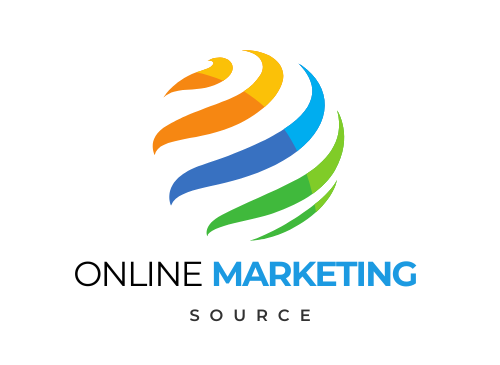Internet Advertising Terms
Today, I’m going to be talking about a subject that will help you maneuver as you move forward in your internet marketing journey: Internet Advertising Terms. This isn’t just about putting ads online, it’s about understanding a new language that has emerged from the online digital revolution. Knowing the right phrases and terms is like holding the key to a treasure chest of opportunities.
Understanding The Importance of Internet Advertising
Internet advertising has become indispensable for businesses big and small. At its core, it’s the engine driving online commerce, turning clicks into visitors and page views into profits.
Staying fluent in its terms isn’t just helpful, it’s critical. It’s the difference between launching an effective campaign and seeing your efforts lost in the vast sea of the internet.
Knowing Key Advertising Terms Will Improve Your Business
What you’re learning here is much more than memorizing buzzwords, it’s arming yourself with knowledge that’ll serve as currency in the digital marketplace. Whether you’re a seasoned marketer or a start-up entrepreneur, a solid grasp of internet advertising lingo is essential.
Don’t worry too much about memorizing every term right off the bat. You can always research the most relevant terms as you delve into practical applications.
Here is a basic list of Internet Advertising Terms.
The A-Z of Internet Advertising Terms and Descriptions
A
Ad Exchange – A digital marketplace that enables advertisers and publishers to buy and sell advertising space, often through real-time bidding (RTB).
Affiliate Marketing – A performance-based marketing model where you reward partners for generating sales or leads.
B
Banner Ad – Typically a rectangular graphic display that stretches across the top or bottom of a website or down the side. It’s one of the oldest forms of internet advertising.
C
Click-Through Rate (CTR) – This measures the percentage of users who click on an ad out of the total viewers. A high CTR indicates effective advertising.
D
Demand-Side Platform (DSP) – A system that allows buyers of digital advertising inventory to manage multiple ad exchange and data exchange accounts through one interface.
E
Engagement Rate – A metric used to gauge the level of interaction users have with content, often through likes, comments, shares, etc.
F
Frequency Capping – A restriction on the number of times a specific visitor to a website is shown a particular advertisement.
G
Geotargeting – The practice of delivering content or advertisements to a user based on their geographic locations.
H
HTML5 Ads – Online ads that use HTML5 files, which allow for animation, interactivity, and multimedia without the need for plugins.
I
Impressions – The number of times an ad is displayed, regardless of whether it’s clicked or not.
J
JavaScript Ads – Ads that are programmed using JavaScript and can be dynamic or responsive, often helping to create engaging advertisements. A snippet of code that tracks user behavior when added to a website.
K
Keyword – A particular word or phrase that describes the contents of a web page and can trigger the display of that page in search engine results.
L
Landing Page – The webpage users are directed to after they click on an ad. The page is usually designed for a specific purpose, such as making a sale or capturing a lead.
M
Mobile Ads – Advertisements that are specifically designed for mobile devices, often featuring unique formats or functionality to engage users on smartphones or tablets.
N
Native Advertising – A type of advertising that matches the form and function of the platform on which it appears, often blending in with the platform’s content.
O
Optimization – The process of making changes and adjustments to ads to improve performance.
Organic Search – Search results through unpaid search engine listings instead of paid advertisements.
P
Pay Per Click (PPC) – A model of internet marketing in which advertisers pay a fee each time one of their ads is clicked.
Q
Quality Score – A metric used by search engines to determine the relevance and quality of your PPC ads and keywords.
R
Remarketing – A technique that allows advertisers to show ads to users who have previously visited their website as they browse the web.
S
Search Engine Marketing (SEM) – The promotion of websites by increasing their visibility in search engine results pages (SERPs) primarily through paid advertising.
T
Tracking Pixels – Tiny, transparent images that are embedded in emails and web pages that track user behavior and conversion data for optimization.
Traffic – The number of people visiting and engaging with a website or page.
U
Unique Visitor – A person who visits a website for the first time during a specific period.
User Experience (UX) – A person’s emotions and attitudes about using a particular product, system, or service, including the practical, experiential, affective, meaningful and valuable aspects of human-computer interaction and product ownership.
V
Viewability – A metric that tracks whether or not an ad had the chance to be seen by a user.
View Through Conversion Rate – A measure of the number of online viewers of an ad who did not click on it but who later visited the advertiser’s site.
W
Webinar – An interactive seminar conducted over the Web.
Widget – A small application with limited functionality that can be installed and executed within a web page by an end-user.
X
XML Sitemaps – A way to tell search engines about the pages on a website that are available for crawling.
Y
Yield Management – A pricing strategy, based on understanding, anticipating and influencing consumer behavior, to maximize revenue from a fixed, perishable resource.
Z
Zero Moment of Truth (ZMOT) – The moment when a consumer researches a product online before they make a purchase.
Leveraging Terms for Strategic Advertising Success
As I said, this is a basic list of online marketing terms to get you started. You can do a more extensive search when you’re ready. The important thing is for you to be aware that these terms can help you improve your online marketing efforts. Knowing the lingo can be a game-changer.
Real World Examples
Let’s take a look at some real-world applications. Imagine you’re using CPC advertising for your latest product. Understanding that ‘CPC’ stands for “Cost Per Click” isn’t enough. It’s knowing that a lower CPC can indicate a high ROI for your campaign. It’s about making informed decisions based on the insights that these terms provide.
Now let’s go beyond the terms themselves to the strategies you can use to leverage these concepts. For example, let’s look at the term “Retargeting.” Once you understand that retargeting is about reaching out to users who have already interacted with your brand, you can start crafting more personalized follow-up campaigns. These are campaigns that many advertisers use because they often lead to higher conversion rates.
But, a word of caution. Many prospects have complained about the use of retargeting. They don’t like the fact that they’re being followed around to their social media sites and other websites. But, just knowing the term and the pros and cons will help you make better decisions in your marketing campaigns.
Internet Marketing Continues To Evolve
And it doesn’t stop at just knowing and using these terms. The digital advertising landscape is rapidly evolving, with new technologies and methods emerging regularly, such as the recent emergence of artificial intelligence (AI). This means a lot is happening very quickly. Being knowledgeable about current terms lays the groundwork for understanding and adopting future advancements in advertising.

Here’s the great part, a lot of opportunity lies in analytics and data-driven terms like “CRO” or “Conversion Rate Optimization”. By understanding the meaning of CRO, you can methodically adjust your website to increase the percentage of visitors who take the desired action, whether it’s making a purchase or signing up for a newsletter.
My Final Thoughts
The digital world is all about testing and optimizing. Having a firm grasp on the key metrics and terminology you have to work with will give you practical feedback to make adjustments to your advertising content and strategy.
These concepts can transform your online presence. Every term you’ll learn is a tool in your marketing toolkit, ready to be leveraged to help you connect with your audience and achieve your business goals.
I encourage you to set aside some time to research the many internet advertising terms. Start with an overview of the many terms and their meaning. This will expand your knowledge about the many possibilities that are available for you to utilize in your business. Then drill down to the terms that you think can help you in the short term and research them further.
Knowledge is power, especially when it comes to navigating the complex but exciting world of digital marketing. You don’t know what you don’t know. As you learn more you should get more and more excited as you see how you can improve your business by implementing new strategies based on your research.
I hope that this article about internet marketing terms has opened your eyes to a whole new level of understanding as you move forward in your online marketing journey.
Please feel free to leave your comments and questions below.
Until next time,
Greg Hoyt
P.S. If you’re interested in learning more about online marketing and how to attract visitors to your content, go here: Learn More








